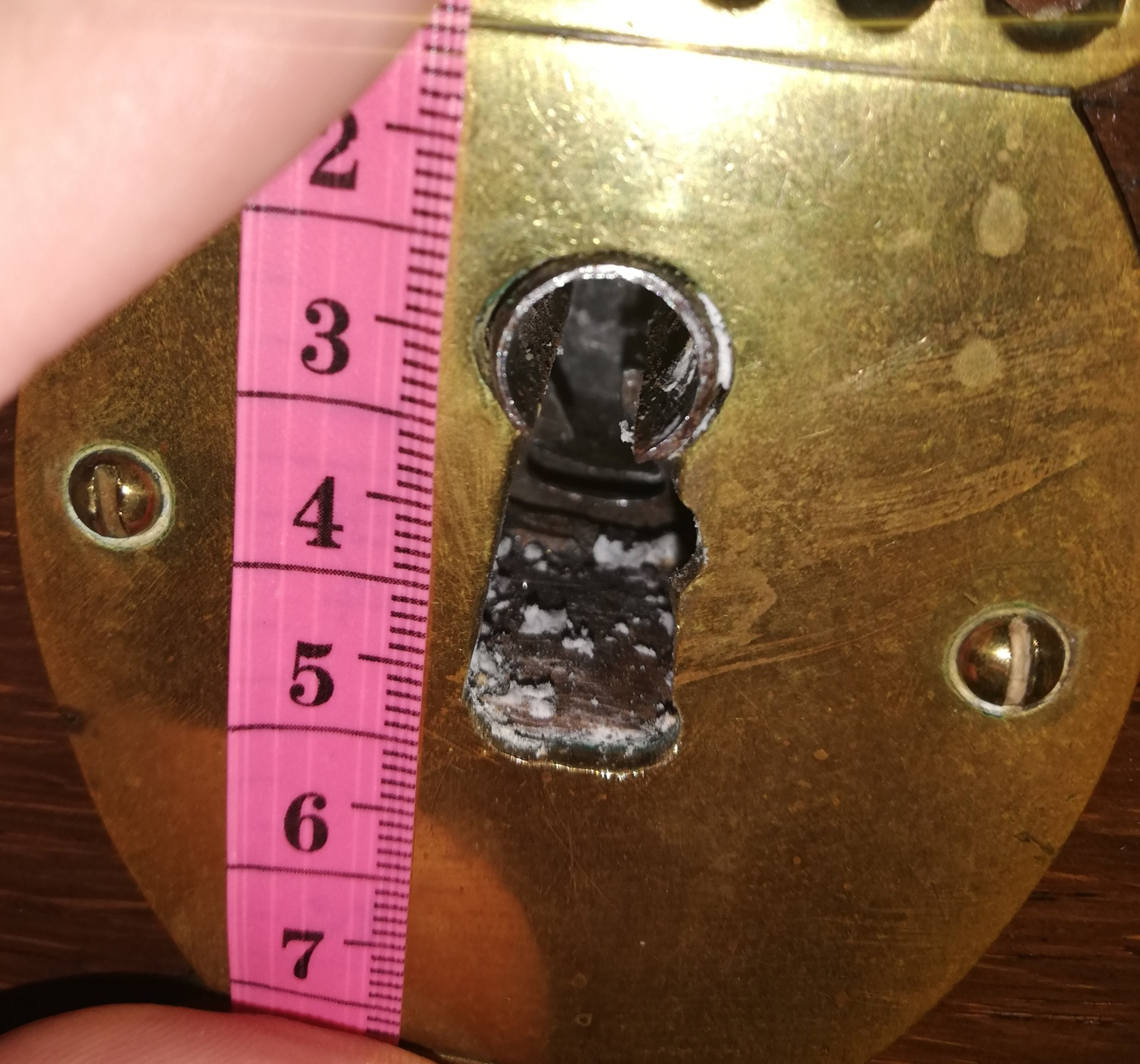I have acquired a chest for which the key was lost years ago. Since I don't want to destroy the lock or the chest, I try to find out what key I need. The chest and key are of german manufacturing as far as I know and as far as the previous owner told me, at worst 150 years old as his grandmother bought it new.
I took a few measurements:
- Key shaft diameter ca. 9 mm
- Key centering pin ca. 2 mm
- Key bit length ca. 14 mm, biggest thickness ca. 9 mm
- Lock is about 25 mm behind the brass plate
The brass plate seems fully ornamental - removing the screws did change nothing. It appears to me that the lock is mounted to the chest from the inside. It seems to follow some german standard that apparently is still used. Assuming there are no cuts in the key needed, what is the correct keyway numbering?





